In the dynamic world of American football, defensive strategies play a pivotal role in shaping the outcome of games. One such strategic gem is the “Dime Defense” formation.
If you’re a football enthusiast looking to delve into the intricacies of this defensive strategy, you’re in the right place.
In this comprehensive guide, we’ll explore what the Dime Defense is, its benefits and drawbacks, when and how to use it, and even provide some valuable practice tips to fine-tune your team’s implementation. Let’s kick off our journey into the world of the Dime Defense!
What is a Dime Defense in Football?
This formation is often utilized in situations where the opposing offense is expected to pass the ball frequently, such as during third-and-long or obvious passing situations. In the Dime Defense, the team typically employs four down linemen, one linebacker, and six defensive backs.
The name “dime” comes from the idea that this formation is an extension of the “nickel” package, which employs five defensive backs. In the Dime Defense, an additional defensive back is substituted in place of a linebacker or lineman to enhance the pass coverage capabilities of the defense.
The primary goal of the Dime Defense is to provide better coverage against the pass by having more defensive backs available to defend against multiple receiving threats, particularly wide receivers, and tight ends.
This formation sacrifices some run-stopping ability and pass-rush potential in exchange for increased coverage and the ability to defend against deep throws and multiple passing options. It’s a strategic choice made by defensive coordinators to counter the offensive strategy of the opposing team.
Roles of Dime Defense in Football
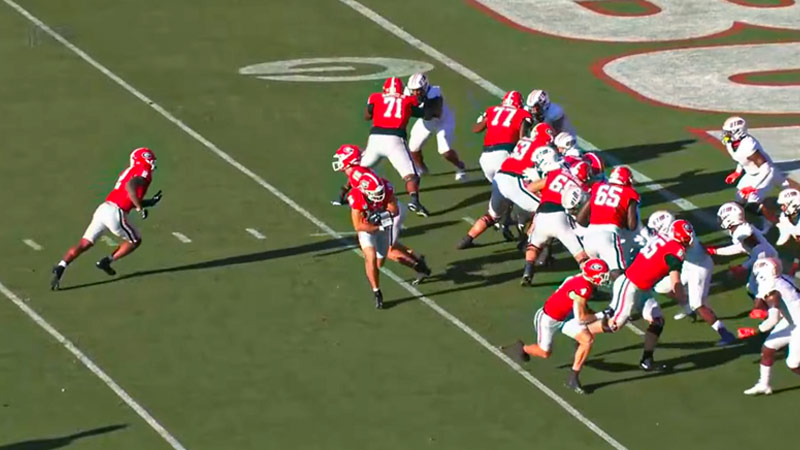
The Dime Defense in football serves several important roles and has specific responsibilities for each player on the field. Here’s an overview of the roles and responsibilities in the Dime Defense formation:
Defensive Linemen (4)
- The defensive linemen’s primary role is to apply pressure on the quarterback and disrupt the passing game.
- They need to engage the offensive linemen, attempt to shed blocks, and get to the quarterback to force hurried or inaccurate throws.
- While they might not be as numerous in the Dime Defense, their pass-rushing skills are still crucial to disrupting the opposing quarterback’s timing.
Linebacker (1)
- The lone linebacker in the Dime Defense usually has coverage responsibilities and is often a more athletic and versatile player.
- The linebacker may cover running backs, and tight ends, or even drop into shallow zones to cover short and intermediate routes.
- In some cases, the linebacker might be used as a spy on the quarterback, especially if the opposing quarterback is mobile.
Defensive Backs (6)
- The defensive backs are the heart of the Dime Defense. They are responsible for pass coverage and preventing big plays in the passing game.
- The two cornerbacks typically cover the wide receivers on the outside and need to stay with them to prevent completions downfield.
- The three safeties (strong safety, free safety, and dime back) provide coverage support, help defend against deep passes and cover intermediate routes.
- The dime back, in particular, is a specialized defensive back often used in the Dime Defense. This player is highly skilled in coverage and might cover slot receivers, tight ends, or running backs in passing situations.
Roles in Coverage
- The Dime Defense focuses heavily on pass coverage, aiming to blanket receivers and limit the quarterback’s options.
- Players need to communicate effectively to switch coverage assignments, pass off receivers when they cross zones, and prevent any open spaces in the secondary.
Preventing Big Plays
- The primary objective of the Dime Defense is to prevent big passing plays, including deep throws and long gains after the catch.
- The extra defensive backs provide more speed and agility to react to receivers and break up passes.
Adaptability
The Dime Defense needs to adapt quickly to the offensive formation and situation. If the offense decides to run the ball, the defense must react accordingly and provide run support.
When to Utilize Dime Defense?
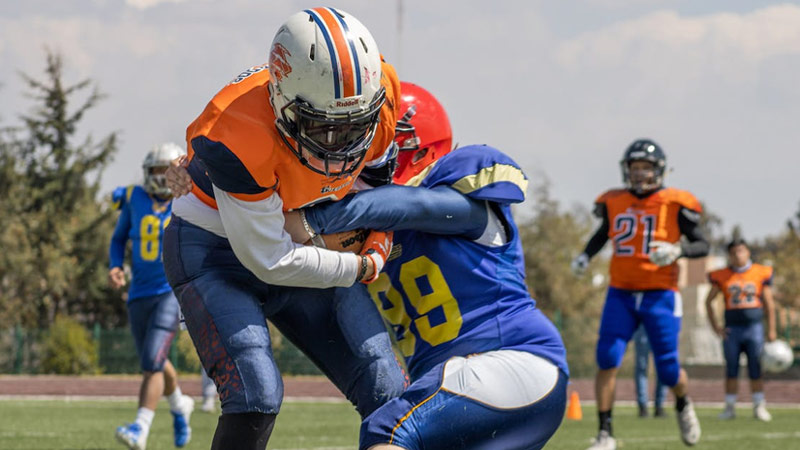
The Dime Defense is typically employed in specific situations where the opposing offense is expected to pass the ball frequently.
Its usage is strategic and aims to counter the offensive strategy. Here are some situations when a team might choose to utilize the Dime Defense:
Third-and-Long Situations
When the offense is facing a third down with a significant number of yards to go (e.g., third-and-7 or more), the Dime Defense is often used. The defense anticipates that the offense will pass to try and convert the long yardage, so having extra defensive backs for coverage is beneficial.
Two-Minute Drill
During the “two-minute drill” at the end of a half or game, when the offense is in hurry-up mode, the Dime Defense can be used to prevent quick and deep completions.
Obvious Passing Downs
In situations where the offense is trailing by a substantial margin and needs to catch up quickly, they are likely to pass frequently. The Dime Defense helps defend against deep passes and quick strikes.
Passing-Heavy Offenses
When facing teams known for their strong passing game, utilizing the Dime Defense can help neutralize their passing threats and limit big plays.
Spread Formations
If the opposing offense frequently employs spread formations with multiple wide receivers or passing targets, the Dime Defense can provide the necessary coverage to match up against these threats.
Tight End or Slot Receiver Threats
If the opposing team has a talented tight end or slot receiver who is a significant passing threat, the Dime Defense can use specialized defensive backs to cover these players effectively.
Down-and-Distance Situational Analysis
Defensive coordinators analyze down-and-distance situations to predict offensive tendencies. If a team tends to pass more often in certain down-and-distance scenarios, the Dime Defense might be called upon.
Anticipated Passing Situations
Based on game flow and offensive tendencies, defensive coordinators might anticipate upcoming passing plays and deploy the Dime Defense proactively.
Benefits of Football Dime Defense
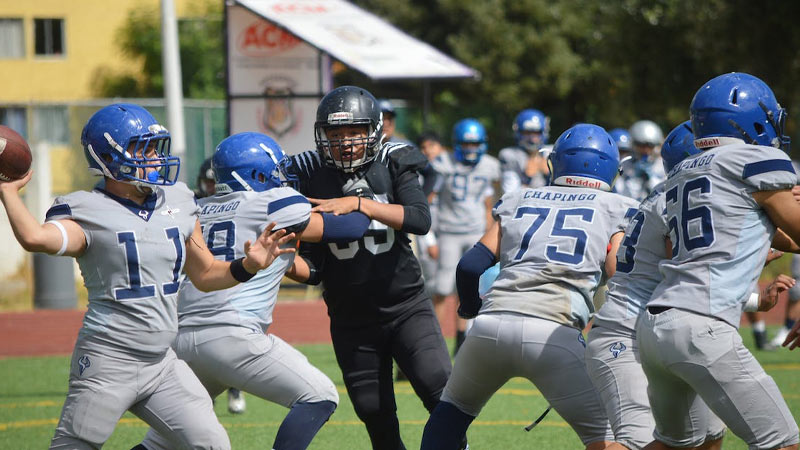
The Dime Defense in football offers several benefits to a team’s defensive strategy, particularly in situations where pass coverage is crucial. Here are some of the key benefits of using the Dime Defense:
Enhanced Pass Coverage
The primary advantage of the Dime Defense is its ability to provide superior pass coverage. With six defensive backs on the field, the defense can match up more effectively against multiple receiving threats, including wide receivers, tight ends, and running backs.
This helps in preventing completions and limiting the effectiveness of the passing game.
Flexibility to Counter Multiple Receivers
In today’s pass-heavy NFL, offenses often use formations with multiple receivers spread across the field. The Dime Defense allows the defense to have enough personnel to cover these additional threats without leaving gaps in the secondary.
Reduced Risk of Big Plays
With more defensive backs on the field, the Dime Defense is better equipped to defend against deep passes and big plays in the passing game. The increased coverage skills of the extra defensive backs help limit explosive plays that can quickly change the momentum of a game.
Quick Reaction to Short Passes
The Dime Defense’s emphasis on coverage helps in defending short and intermediate passing routes effectively. Defensive backs are positioned to quickly react to short throws, limiting yards after the catch and potentially forcing the offense into third-and-long situations.
Adaptability to Passing Situations
The Dime Defense is a valuable tool in third-and-long situations or when the opposing team is in a hurry-up offense. It’s a proactive response to anticipated passing plays, putting the defense in a better position to defend against the pass.
Matchup Advantage
With specialized defensive backs, like the dime back, the defense can create favorable matchup situations. A skilled dime back can cover slot receivers, tight ends, or running backs effectively, neutralizing key offensive threats.
Pressure on the Quarterback
While the Dime Defense prioritizes pass coverage, it still maintains a pass-rushing presence with four down linemen. This allows the defense to generate pressure on the quarterback, potentially leading to hurried throws and mistakes.
Disruption of Timing
The Dime Defense can disrupt the timing and rhythm of the opposing passing game. The extra defensive backs can confuse quarterbacks with different coverage looks and pre-snap disguises.
Two-Minute Defense
In situations where the opposing offense is running a hurry-up offense to score quickly, the Dime Defense helps in preventing quick strikes and forcing the offense to methodically move down the field.
Personnel Utilization
The Dime Defense enables teams to maximize the skills of their defensive backs, especially those who excel in coverage. This formation puts players in positions where they can make the most impact on the game.
Drawbacks of Football Dime Defense
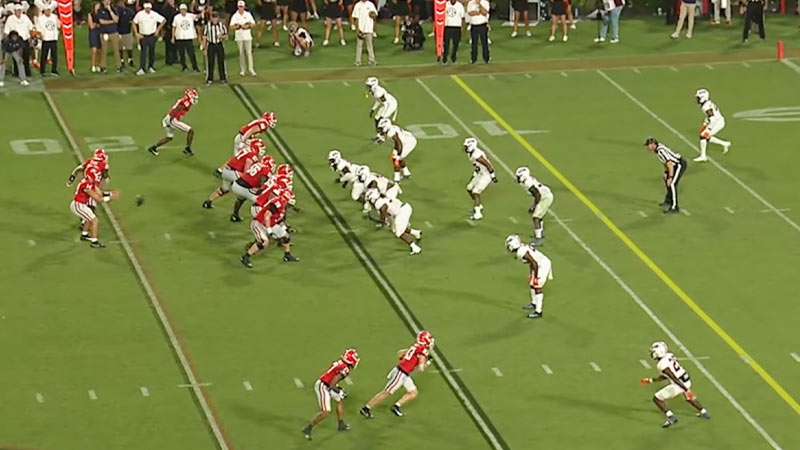
While the Dime Defense offers numerous benefits for pass coverage, it also comes with certain drawbacks and potential vulnerabilities that teams need to consider. Here are some of the drawbacks associated with using the Dime Defense:
Run Defense Vulnerability
One of the most significant drawbacks of the Dime Defense is its susceptibility to the run. With only one linebacker and four defensive linemen, the defense may struggle to defend against the run effectively, especially in short-yardage situations.
Opposing offenses can exploit this weakness by running the ball and gaining substantial yardage.
Physicality and Tackling Concerns
Defensive backs, while skilled in coverage, might lack the physicality and tackling ability of linebackers and linemen. This can lead to missed tackles and additional yards gained by the offense after contact.
Limited Pass Rush
While the Dime Defense maintains four defensive linemen for pass rushing, the overall pass rush might be compromised due to the absence of linebackers. The defense might struggle to generate consistent pressure on the quarterback, giving them more time to find open receivers.
Mismatch Potential
Opposing offenses can attempt to exploit mismatches created by the presence of fewer linebackers or linemen. They may try to run the ball with favorable matchups or target linebackers with passes to exploit coverage weaknesses.
Third-Down Conversion Potential
In some situations, offenses might be able to exploit the Dime Defense on third downs by running the ball effectively and converting manageable third-and-short situations. This can extend drives and keep the defense on the field.
Limited Run Blitz Options
The Dime Defense limits the options for run blitzes, which are aggressive run-stopping plays involving linebackers or safeties. This can make it challenging to disrupt running plays in the backfield.
Personnel Limitations
Not all defensive backs are equally skilled in coverage, and some might struggle against certain types of receivers. If the defense lacks depth or quality in its defensive backfield, the Dime Defense might not be as effective.
Exposure to Play-Action
With an emphasis on pass coverage, the Dime Defense might be susceptible to play-action passes. The aggressive nature of defensive backs in coverage could leave them vulnerable to biting on play fakes.
Dime Defense Drills and Practice Tips
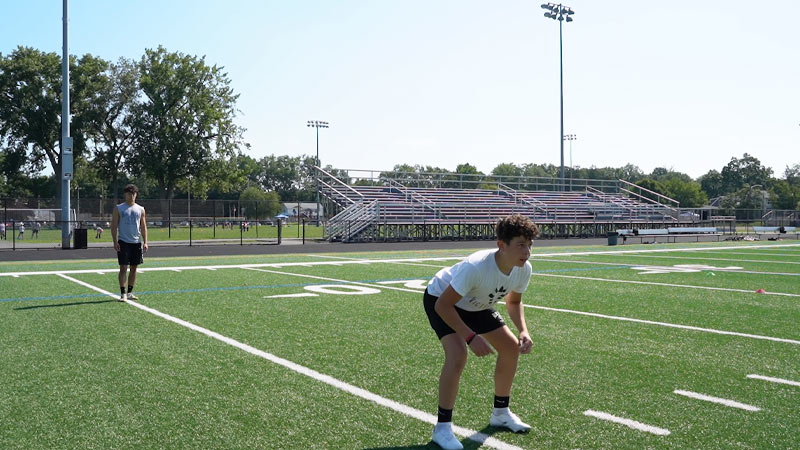
Practicing and implementing the Dime Defense effectively requires a combination of individual skills, coordination, and communication among the defensive players. Here are some drills and practice tips that can help teams develop their Dime Defense strategy:
Individual Coverage Drills
- Work on fundamental coverage skills for defensive backs, including backpedaling, maintaining proper leverage, breaking on the ball, and reacting to receiver movements.
- Focus on techniques to stay with receivers, locate the ball, and make plays on passes.
Zone Coverage Drills
Practice zone coverage responsibilities by simulating different zone assignments. Defensive backs should learn to read the quarterback’s eyes, recognize receiver routes, and adjust their positioning accordingly.
Man-to-Man Coverage Drills
Develop man-to-man coverage skills by having defensive backs cover receivers one-on-one in practice. Emphasize techniques like press coverage, mirroring routes, and maintaining contact without drawing penalties.
Communication Exercises
Effective communication is key in the Dime Defense. Practice verbal and non-verbal communication among defensive backs to ensure proper coverage assignments and adjustments.
Route Recognition
Train defensive backs to quickly recognize common route combinations and concepts that offenses use. This helps them anticipate and react to receivers’ movements.
Film Study
Study game film to analyze opponents’ passing tendencies, formations, and preferred routes. This helps defensive backs anticipate plays and make informed coverage decisions.
Simulated Game Situations
Set up practice scenarios that mirror specific game situations where the Dime Defense would be utilized. This helps players understand when to implement the formation and how to adjust based on down, distance, and offensive personnel.
Run Defense Integration
While focusing on pass coverage, incorporate run defense drills to ensure that defensive backs understand their run-filling responsibilities when facing rushing plays.
Pass Rush Drills
Although the Dime Defense prioritizes coverage, practice pass rush techniques with linemen and linebackers. This helps maintain some level of pressure on the quarterback and disrupts timing.
Live Scrimmages
Incorporate live scrimmage situations to simulate game-like conditions. This allows the defense to practice their communication, adjustments, and execution in real-time scenarios.
Conditioning
Since defensive backs might be on the field for extended periods in the Dime Defense, ensure they are well-conditioned to maintain their effectiveness throughout the game.
Variety of Receivers
In practice, have defensive backs cover a variety of receivers with different skill sets. This helps them adapt to various matchups they might face in games.
Feedback and Corrections
Provide consistent feedback to players, correcting mistakes and reinforcing correct techniques. Encourage a growth mindset and continuous improvement.
Simulated Snap Counts
Practice reacting to different snap counts to improve the timing of breaks on the ball and coordination among defensive backs.
Scouting Reports and Adjustments
Teach players how to adjust their coverage based on scouting reports and recognize offensive tendencies. This improves their decision-making and adaptability in the field.
FAQs
What is the Dime Defense in Football?
The Dime Defense is a defensive formation utilized in football that involves substituting six defensive backs onto the field simultaneously.
While it shares similarities with the Nickel package, the Dime Defense goes a step further by bolstering pass coverage against offenses expected to heavily rely on the passing game.
This formation employs four down linemen, one linebacker, and six defensive backs to enhance the defense’s ability to counter multiple receiving threats.
When Should You Utilize the Dime Defense?
Teams often deploy the Dime Defense in situations where the opposing offense is anticipated to pass frequently. Third-and-long situations, two-minute drills, and obvious passing downs are prime examples.
The Dime Defense is particularly effective against passing-heavy offenses, spread formations, and when facing talented slot receivers or tight ends.
What Are the Benefits of the Dime Defense?
The Dime Defense offers several benefits, including enhanced pass coverage, reduced risk of big plays, adaptability to passing situations, and flexibility to counter multiple receivers.
It can disrupt the opposing quarterback’s timing, prevent explosive plays, and provide the necessary coverage against potent passing attacks.
What Are the Drawbacks of the Dime Defense?
While effective in pass coverage, the Dime Defense is vulnerable to the run due to its limited number of linebackers and linemen. It might struggle against physical run plays and short-yardage situations.
Additionally, the defense’s pass rush might be compromised, and mismatch potential could be exploited by the offense.
What Drills and Practice Tips Enhance the Dime Defense?
To excel in implementing the Dime Defense, teams can focus on individual coverage drills, zone and man-to-man coverage exercises, communication practice, recognizing opponent tendencies through film study, and simulating game situations.
Including run defense integration, pass rush drills, and live scrimmages can also fine-tune the defense’s effectiveness in real-game scenarios.
Wrapping Up
The Dime Defense is more than just a tactical formation; it’s a strategic masterpiece designed to thwart opponents’ passing plans. By understanding its nuances, benefits, and limitations, teams can deploy the Dime Defense at the right moments to gain a competitive edge.
With the right practice, preparation, and coordination, this defensive formation can become a game-changing tool that leaves quarterbacks frustrated and receivers blanketed.
As you delve deeper into the realm of football strategy, the Dime Defense stands ready to elevate your defensive prowess to new heights. Thank you for your time.







